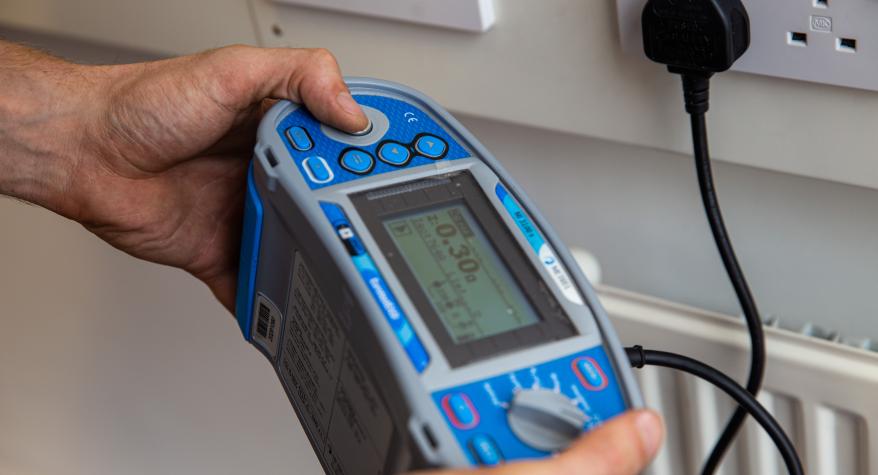Electrical safety is absolutely vital to businesses to prevent injury, accidents, and potential court cases. There is a legal requirement under the Health and Safety at Work act and the Electricity at Work Regulations to ensure that businesses carry out regular inspections on their wiring installations and portable appliances.
Electrical Compliance for Businesses in Bristol
Failure to comply with this requirement can have serious consequences. As your local ELECTRICIAN IN BRISTOL, we can help you with all your electrical compliance requirements for your business.
Periodic Electrical Inspection
What is a Periodic Electrical Inspection? It is a process that involves checking the electrical installation for safety, defects, and potential hazards. The electrician will carry out as much testing as possible on the installation on the day the inspection is carried out.
Following the electrical inspection a report is produced. This is called an Electrical Installation Condition Report or EICR. The report is typically around 5-8 pages in length and contains valuable information on the type of electrical system that is in place, test results and observations.
What are Observations?
Observations are situations that the electrician has seen that are worthy of comment or recording on the observations form.
An observation can be something that is has been spotted visually or something that has shown up under testing. Typically, these are electrical problems.
Each observation will be given a code to indicate the severity of danger or non-compliance with the wiring regulations. There are a number of codes that can be applied to an observation as follows:
- C1- Immediate Danger such as Live Parts Exposed
- C2 – Potentially Dangerous such as badly damaged electrical accessories
- C3 – Recommended Improvement such as missing labelling from electrical circuits
- FI – Further Investigation required. This code is generally used when the inspector could not determine the root cause but believes that it may lead to a C2 or C1 code upon further investigation.
NOTE – Something which is not part of the wiring regulations, does not require a code but is worth mentioning.
The observations list in newer electrical installations may only include C3 codes for minor issues such as very minor damage, missing labels, sleeving missing from a circuit protective conductor or other issue.
- A C1 code should be notified straight away and if possible, fixed immediately.
- A C2 code should be reported and fixed without delay.
- A C3 code should also be acted upon and repairs carried out.
What makes an EICR unsatisfactory?
Where there are C1, C2, or FI codes, the report is automatically unsatisfactory. C3 codes and Notes alone should result in a SATISFACTORY EICR.
Remedial works
Where an EICR is UNSATISFACTORY, remedial works will be required in order to rectify the dangerous situations. This could be something as simple as minor repairs to a distribution board, swapping circuit breakers, wiring repairs or there could be an element of fault finding to take place as well as the repairs that are known about.
PAT or EET
Portable Appliance Testing is now known as Electrical Equipment Testing. This is the process of documenting, testing, and inspecting all electrical equipment in the premises. Various tests are carried out to make sure that appliances are safe to use. The earth of the appliance case is tested along with ensuring there are no insulation faults on the appliance or wiring.
The results will be a pass or fail.
A sticker will be attached to the plug and possibly onto the appliance itself stating PASS or FAIL.
Get in touch to arrange your electrical safety testing for your business and see how we can help you.





